Quiz time!
What’s the difference between this site:
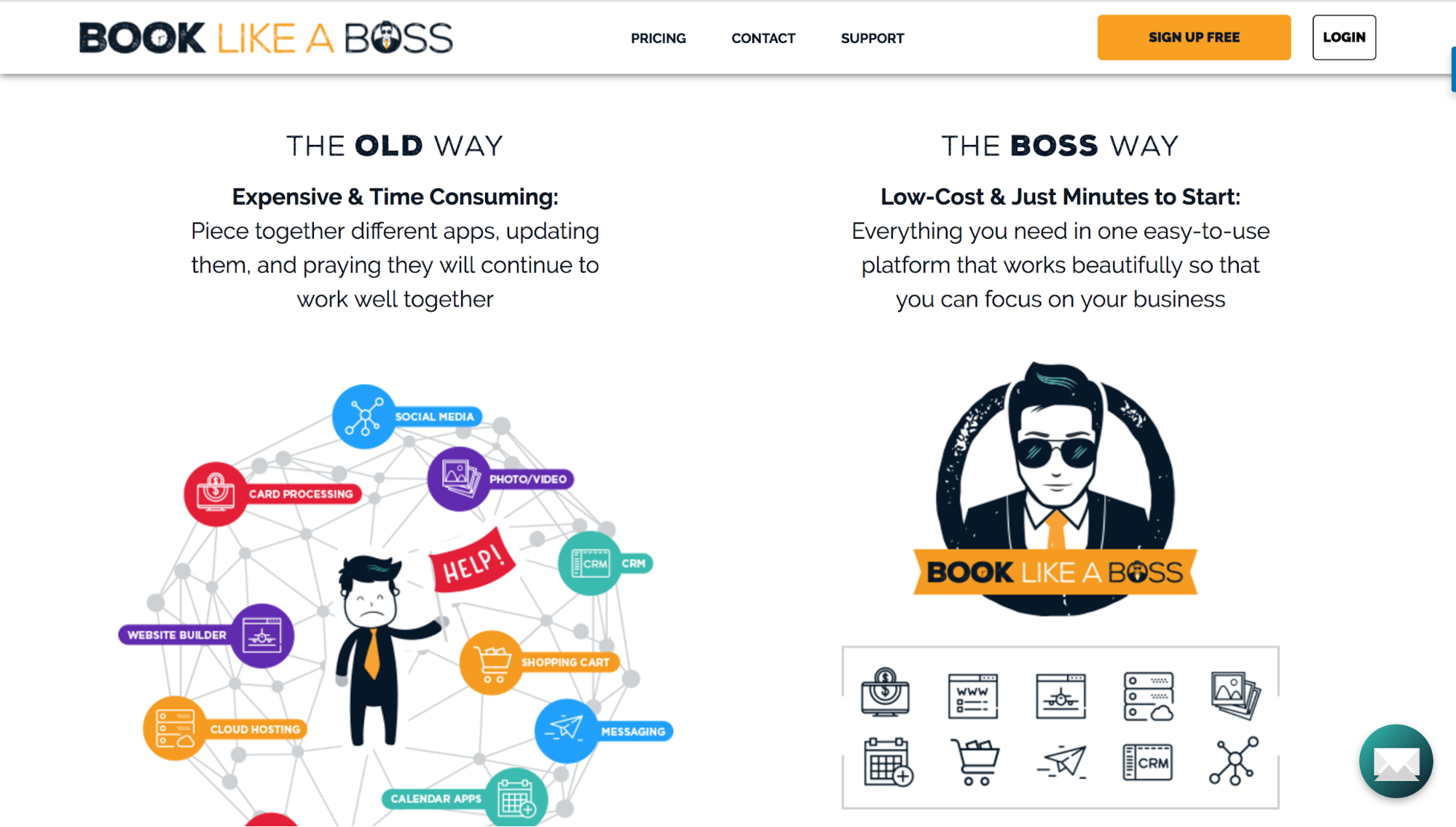
And this one?

Besides that one sells like gelato on a hot summer day and the other sells probably about as well as bibles at a rave.
They’re both scheduling SAAS businesses. They’re both helping their customers overcome the same challenges. They both are reaching similar demographics.
The difference?
- Brand B understands the demographics of their customers.
- Brand A, on the other hand, also understands the psychographics
Therefore, Brand A undoubtedly collects more leads, makes more conversions, and enjoys more sales than Brand B.
You want to be in the same camp as Brand A (trust me). But to do so, you need to be intimately familiar with the psychographics of your target customers.
So, good news: In this jam-packed guide, I’ll cover everything you need to know about psychographics.
It’s so detailed that I broke it into chapters:
Chapter #1: What Are Psychographics (+ Why Do They Matter)?
Chapter #2: How To Use Psychographics in Your Marketing to Increase Conversions & Sales
Chapter #3: How to Find Your Target Customer’s Psychographics (For Free)
Let’s start with the age old question…
Chapter 1: What Are Psychographics?
If you asked them about their target customers, most new entrepreneurs will answer with something like this:
“I want to reach men between the ages of 35-50 who live in the US and are interested in fitness”.
These are demographics. They’re those nifty nuggets of information you can find in your Google Analytics.
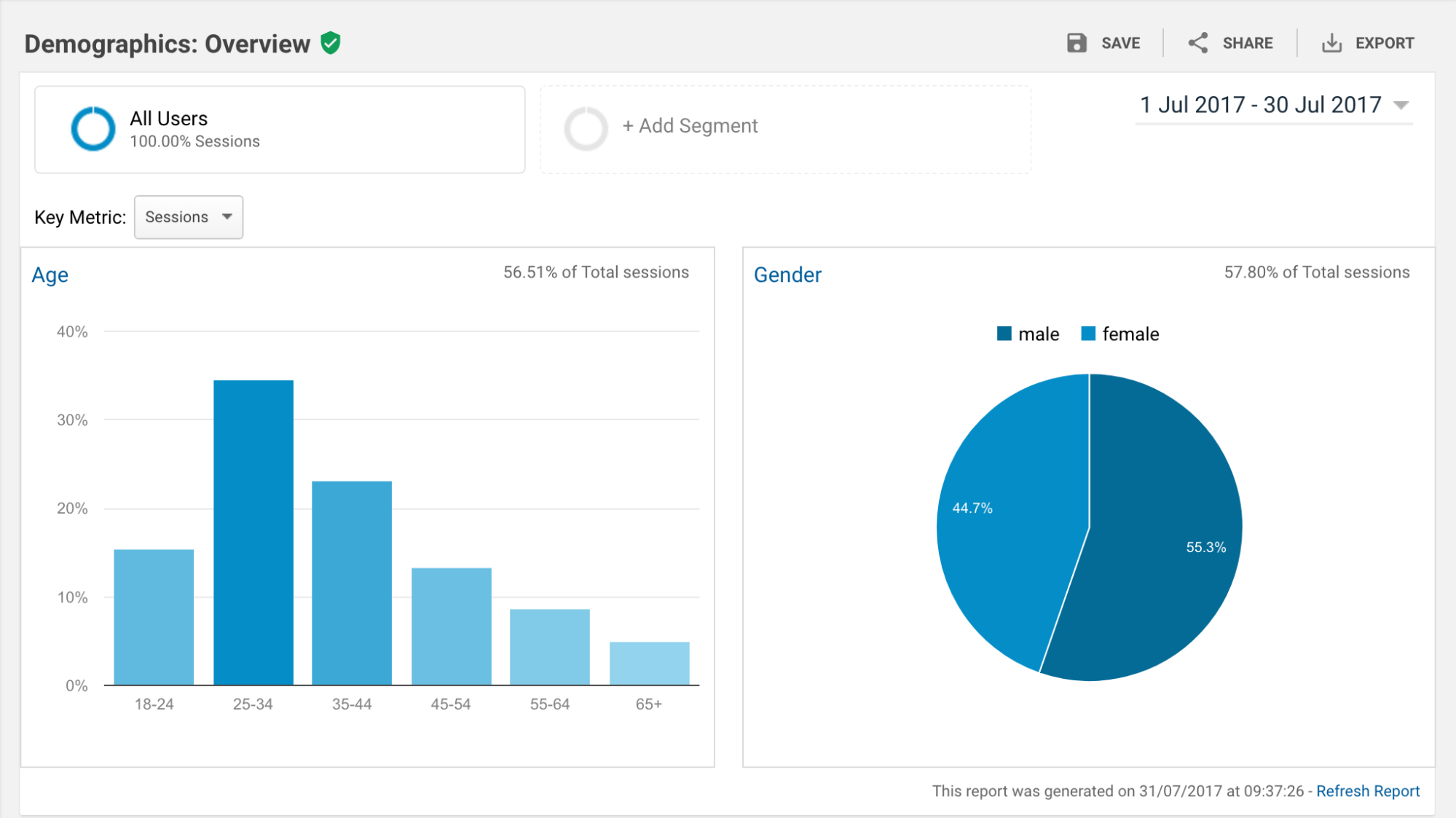
There’s nothing wrong with being clear on your target demographics, but it won’t help you sell to them.
To sell, you need to understand the psychographics of your target customer.
Psychographics aren’t just the age of your target customer, or their household income or where they live. Psychographics are the motivations behind why your customers buy.
Demographics: the “who”.
Psychographics: the “why”.
Demographics cover things like:
- Gender
- Age
- Location
- Marital status
- Household income
But psychographics cover things like:
- Lifestyle: What type of life they lead, culture they follow, values they have.
- Beliefs: Religious, personal, and political schools of thought.
- Interests, hobbies, media: What your target customer is consuming, how they spend their time.
- Personality: Personal traits, personas and dispositions.
- Goals, desires: What motivates them, what do they want to achieve, how they want to live, what/who they aspire to be.
- Struggles, challenges: What’s preventing them from meeting their goals?
- Fears, dislikes: What keeps them up at night? What do they dislike, what are they afraid of?
Demographics are factual, whereas psychographics are less tangible.
Got it?
But Why Are Psychographics Relevant to My Business?
So, there’s a difference between psychographics and demographics.
Check.
But why does it matter for your business? And most importantly, how do psychographics help you make more money?
Let’s say a personal trainer targeted demographics. They paid $100/day on a Facebook ad targeting women 25–35 in the United States who were interested in “physical fitness”.

That ad might get a few clicks. But because it’s so general, most of this demographic won’t know whether the services are for them.
Now let’s say that personal trainer added psychographics to the mix.
They switch their ad up: instead of a picture of a generic woman stretching, they choose one of a bride in a wedding dress that fits perfectly (aspirational).

They:
- Call out something they know almost every bride struggles with (quick weight loss during a time when celebrating with food and drink is the norm).
- Acknowledge the alternative (Spanx, which, if you’ve ever been a bride… *cringe*).
Now, every woman in the demographic who is about to get married and has a few pounds to lose will pay attention.
Targeting a broad audience isn’t useful if nobody pays attention or knows whether your products or services are for them. And nobody’s going to waste their time trying to figure it out.
Understanding the psychographics of your customer means you understand:
- What motivates them to buy. If you know what motivates your customers to buy, you can… well, motivate them to buy.
- Where they spend their time online. So you can stop wasting your money paying for Instagram ads to get in front of customers who don’t use Instagram.
- What they struggle with. So you can solve those problems with your products and services.
- How they describe your products. So they know what you’re offering and whether they need it.
- Their objections, goals, fears. So you can create copy that resonates with them (read: sells).
Knowing your market’s psychographics turns mystery into a formula for selling and marketing.
So now you know you need to use psychographics in your marketing.
The next question: how? Don’t worry. I’ve got you covered.
Chapter 2: How To Use Psychographics in Your Marketing to Increase Conversions & Sales
Here’s how to use psychographics in your marketing to increase your conversions, make more money in your business, and develop a brand your target customers flock to.
Use Them to Write Sales Copy
Whether on sales pages, in sales emails, or in your launch videos, psychographics can drastically increase your conversions.
Check out how AppSumo used their target customer’s psychographics in their copy for their Beacon deal:
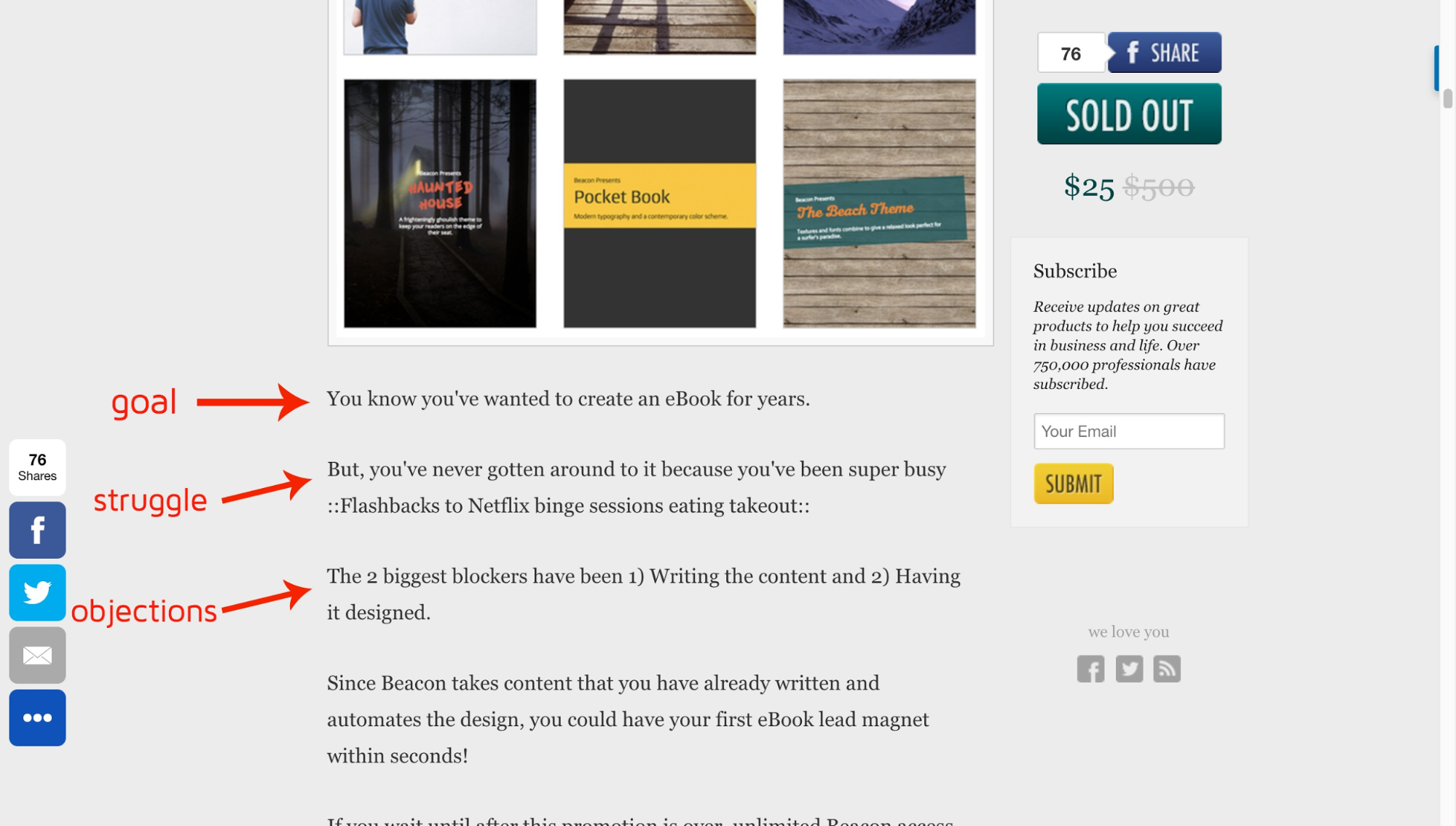
They could have just described what Beacon does. But that wouldn’t have sold very well.
Instead, they used their customer’s psychographics to aggravate the problems they’ve experienced, and make them want the solution (Beacon).
Goal – Wanting to create an eBook
Struggle- Not being able to get around to creating the ebook (productivity — AppSumo calls out Netflix)
Objections – Writing the content, having the eBook designed.
Protip: The easiest formula for creating sales copy that uses psychographics is the popular PAS: Problem, Aggravate, Solution. Identify the problem, aggravate it, and then pose the solution.
Problem: Wanting to create an eBook for years, but not getting around to it. Aggravate: Two big roadblocks, including writing the content and having it designed. Solution: Beacon!
Use Them to Increase Your Website Traffic
One type of psychographic is what type of media your target customer consumes.
So it makes sense that you can use psychographics to increase your traffic by finding where your customers hang out online.
Example: We know our customers prefer Facebook to other social platforms. Because we know this, we know our ROI on Facebook is higher than any other social platform, so we spend a disproportionate amount of time on that platform (and if we didn’t, we’d have 67% less social traffic). 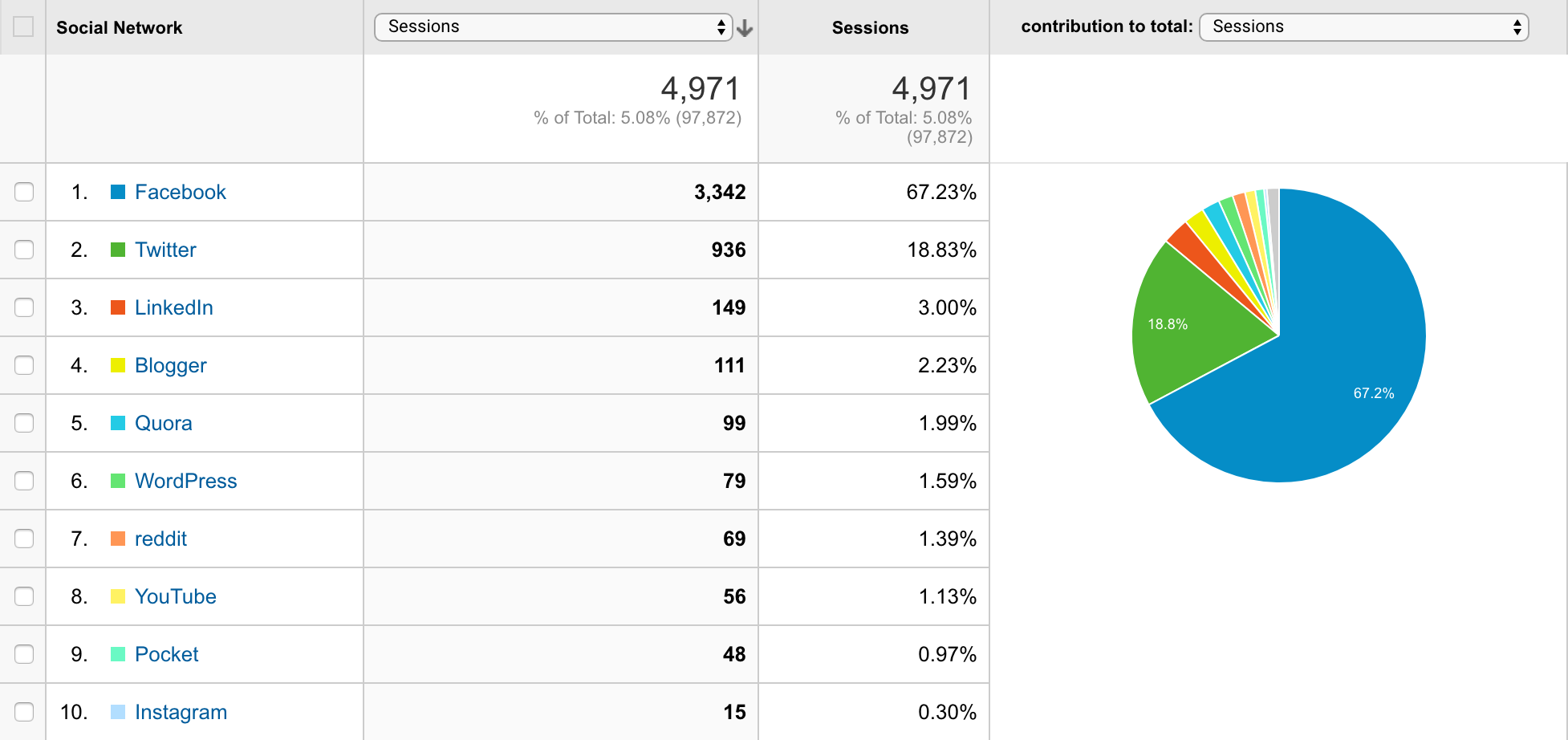
Saving us time and money testing ads on platforms that our target customers don’t spend time on.
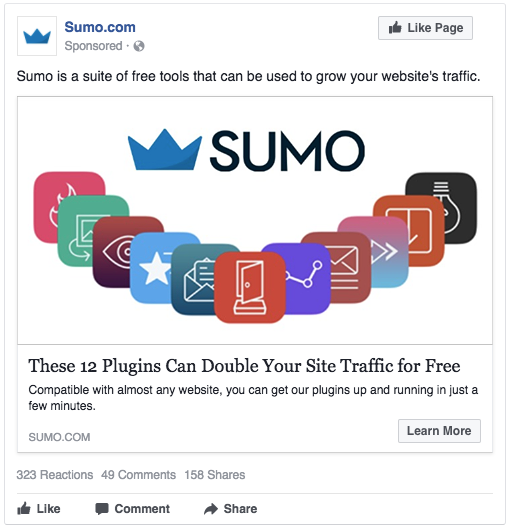
Use Them in Your Headlines
Which headline are you more likely to open?
- Growing a Site from 0 to 10k Visitors in a Month: Noah Kagan Edition or
- How to Grow a Website Fast in 2017?
If you said B, you’re probably lying.
Growing a Site from 0 to 10k Visitors in a Month: Noah Kagan Edition is one of our most popular articles on Sumo to date, driving the most sales, signups, accounts than any other article on the Sumo blog in 2016:
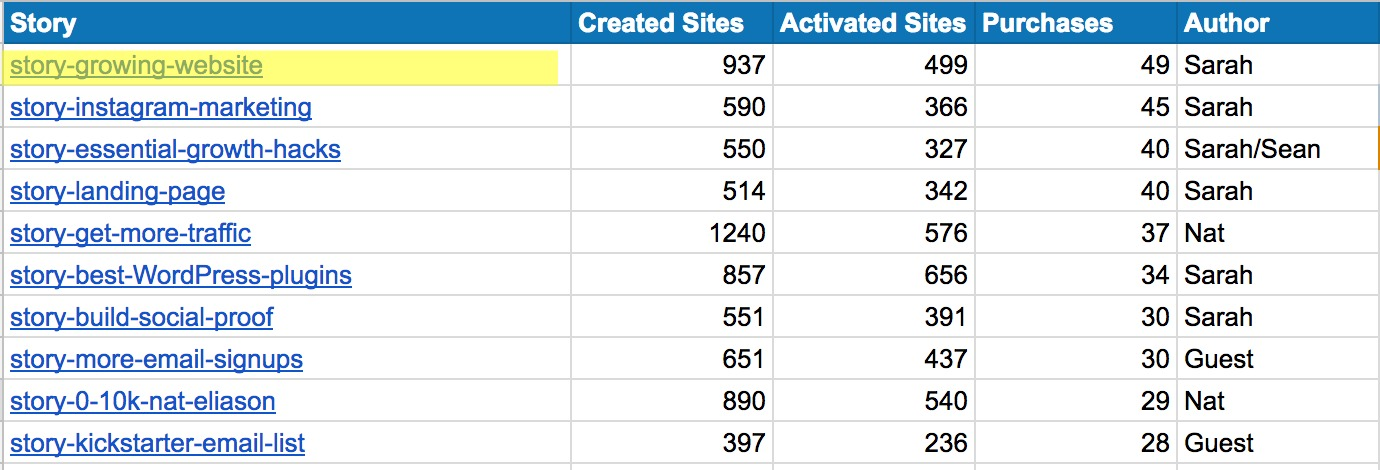
But if the headline didn’t jive with our target customers psychographics, it would have flopped.
Headlines are your reader’s first point of contact with your content. They see it on social, in an email, or on your site and if it doesn’t offer something they want, they won’t bother clicking the link.
No clicks = no traffic = no emails or sales.
There are psychographics all over this headline:
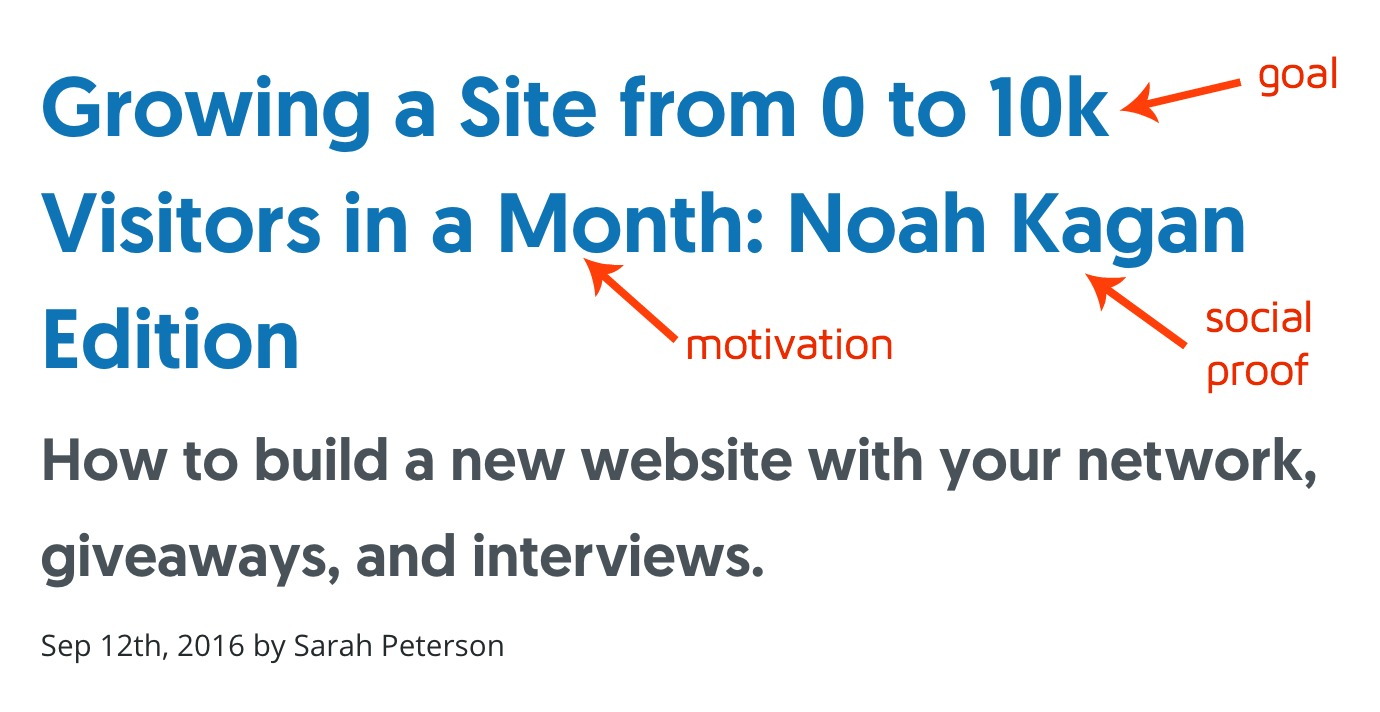
- A main goal of our target customers is increasing their traffic
- Many of our target customers are motivated by quick results
- Our target customers follow our CEO, Noah Kagan.
Identify the fears, goals, motivations or aspirations of your customers. Then, use them in your headlines like we’ve done above.
Most headline formulas worth their salt rely on psychographics.
Use Them to Create Viral Content
Recently I was browsing Reddit and found a Sumo user who does everything right with content — not the least of which is using psychographics to create the content that led me to the site to begin with.

The owner of Pyshiqonomics, Aadam, knows the psychographics of his target client enough to know that they struggle with enjoying a few drinks on the weekend without it interfering with their weight loss goal.
Re-read that sentence. Note:
Struggle: drinking without ruining goal progress
Goal: Weight loss.
Lifestyle: drinking, getting “turnt up”
All psychographics.
The article has been shared 1.5k times on Facebook alone, but the real feat is that it’s been organically shared on Reddit over and over again.
Redditors don’t share content very often, and when they do it can lead to massive traffic and notoriety.
And I can promise you that this article wouldn’t have been shared at all if Adam didn’t know a thing or two about the psychographics of his audience.
Use Them to Grow Your Email List
For every $1 you spend on email marketing you can expect to earn $44.[*]
That stat makes growing your email list extremely important. And if you don’t understand the psychographics of your customer, you’ll have a tough time growing your list.
Use psychographics with what you’re offering, like Snowboard Addiction does:
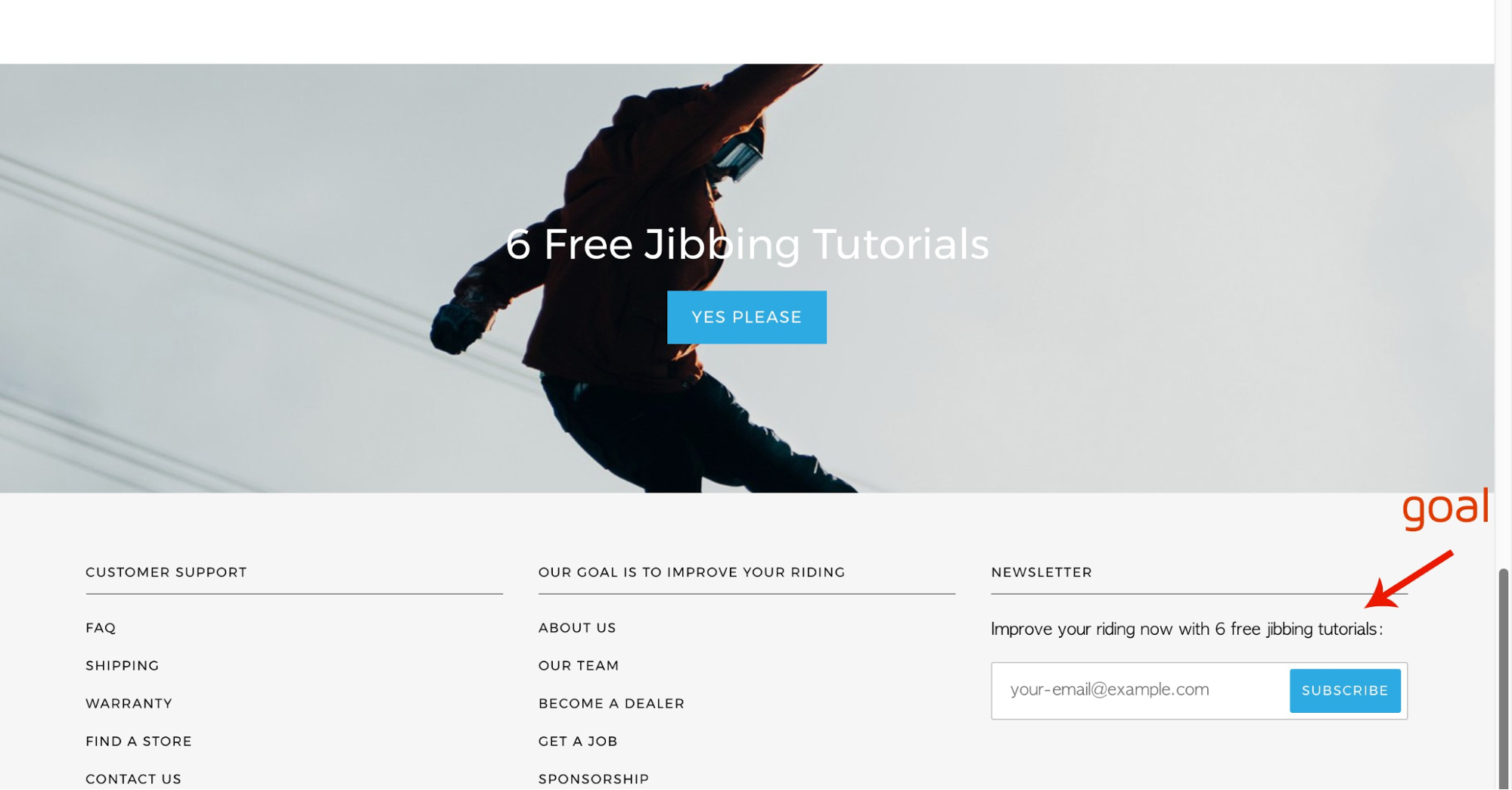
You can bet they have a healthy conversion rate because they understand what their customers struggle with.
The more people on your email list, the more sales you make.
Use Them in Your Branding
Ever wonder why some brands seem to develop a cult-like following, and some brands flop, even if they sell similar products and are targeting the same customers?
The truth is, even if the two brands:
- Had the exact same ad budget
- Targeted the exact same people
- Sold the exact same products
The brand that uses psychographic marketing will trump the other brand any day of the week.
Consider Slack.
Slack’s growth is, to take a page out of TechCrunch, “insane”.
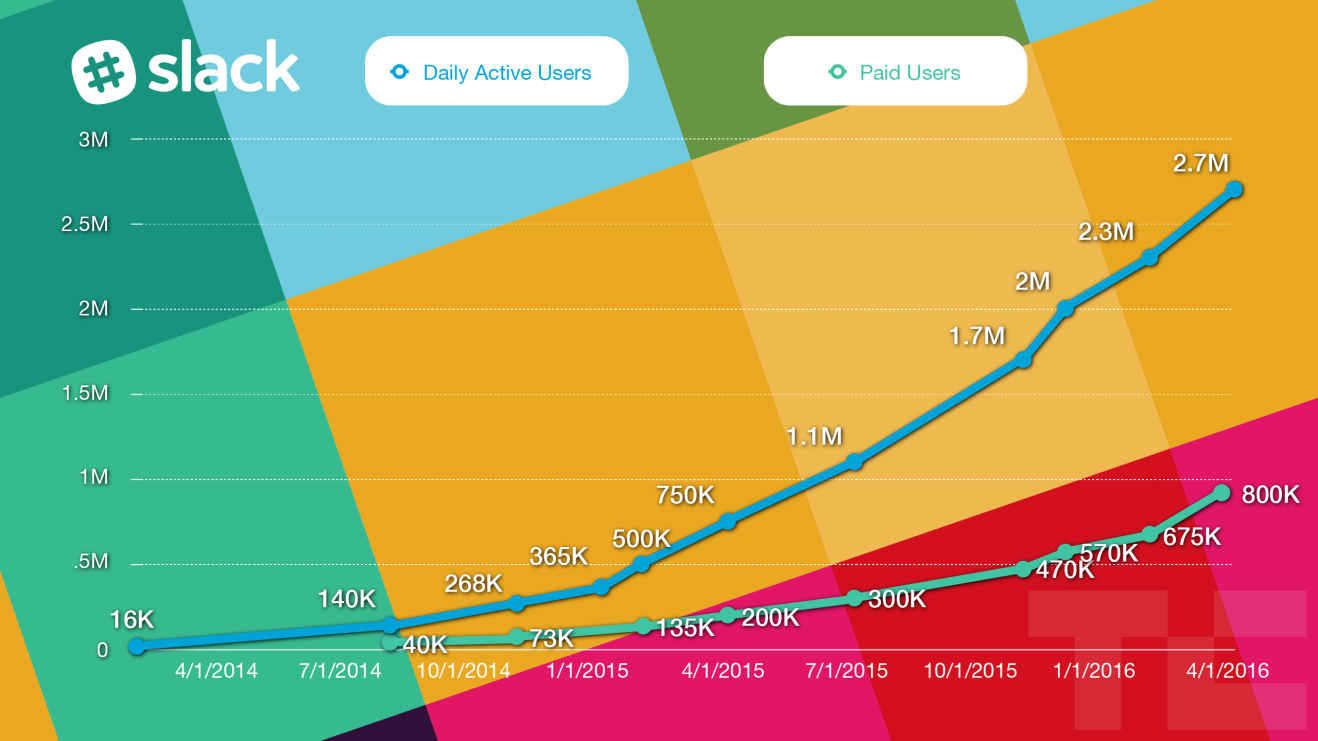
Source: TechCrunch
Part of what’s behind Slack’s growth is the product. Part of its success can be attributed to the investors and team behind the company.
But if Slack didn’t intimately understand who their customer is — not just their demographics, but their psychographics, too — then it would have never taken off the way it did.

Slack uses psychographic marketing in every element of their brand:
- Their company name (the term “Slack” may not have been as popular if they were targeting corporate executives)
- Their logo (a hashtag is more relevant to their target customers)
- The way they communicate what they do on their homepage (“Where work* happens. Whatever work means for you” is like a nod to startup culture).
Even if Slack’s product remained the exact same, if they hadn’t used psychographics in their branding, they wouldn’t have enjoyed nearly as much growth.
Use Them In Your Product Listings
Psychographics allow you to develop a brand that acts like a magnet to your target customer.
Check out how Modcloth even uses psychographics in their product listings. They use them in their product titles:

If you were Modcloth’s target customer, which would you find more compelling?
a) “Asymmetrical Black Jacket”
b) Brunch on the Patio Jacket in Black?
(Hint: If you answered “a”, you’re not Modcloth’s target customer).
Modcloth knows their customers likes to brunch. And they’re smart.
So smart, in fact, that they use psychographics in their product descriptions, too:
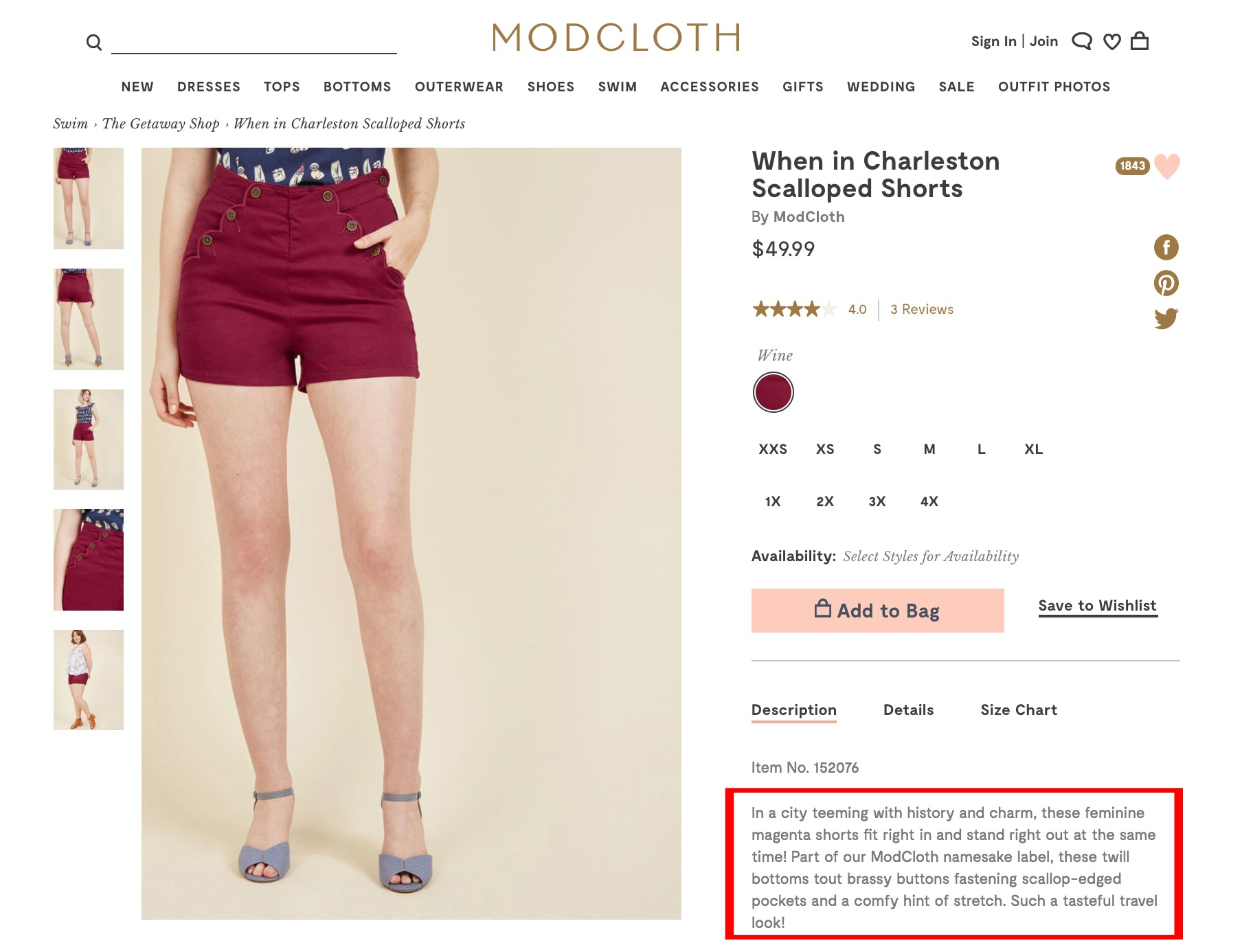
Knowing their customers value comfort, femininity, stretch, and like to travel.
Use Them to Develop Products
In 2015, I wanted to launch a course for one of my sites, Etsy How To, but didn’t know what my audience needed.
So I sent my email list a survey and asked them a few questions that would reveal their psychographics:
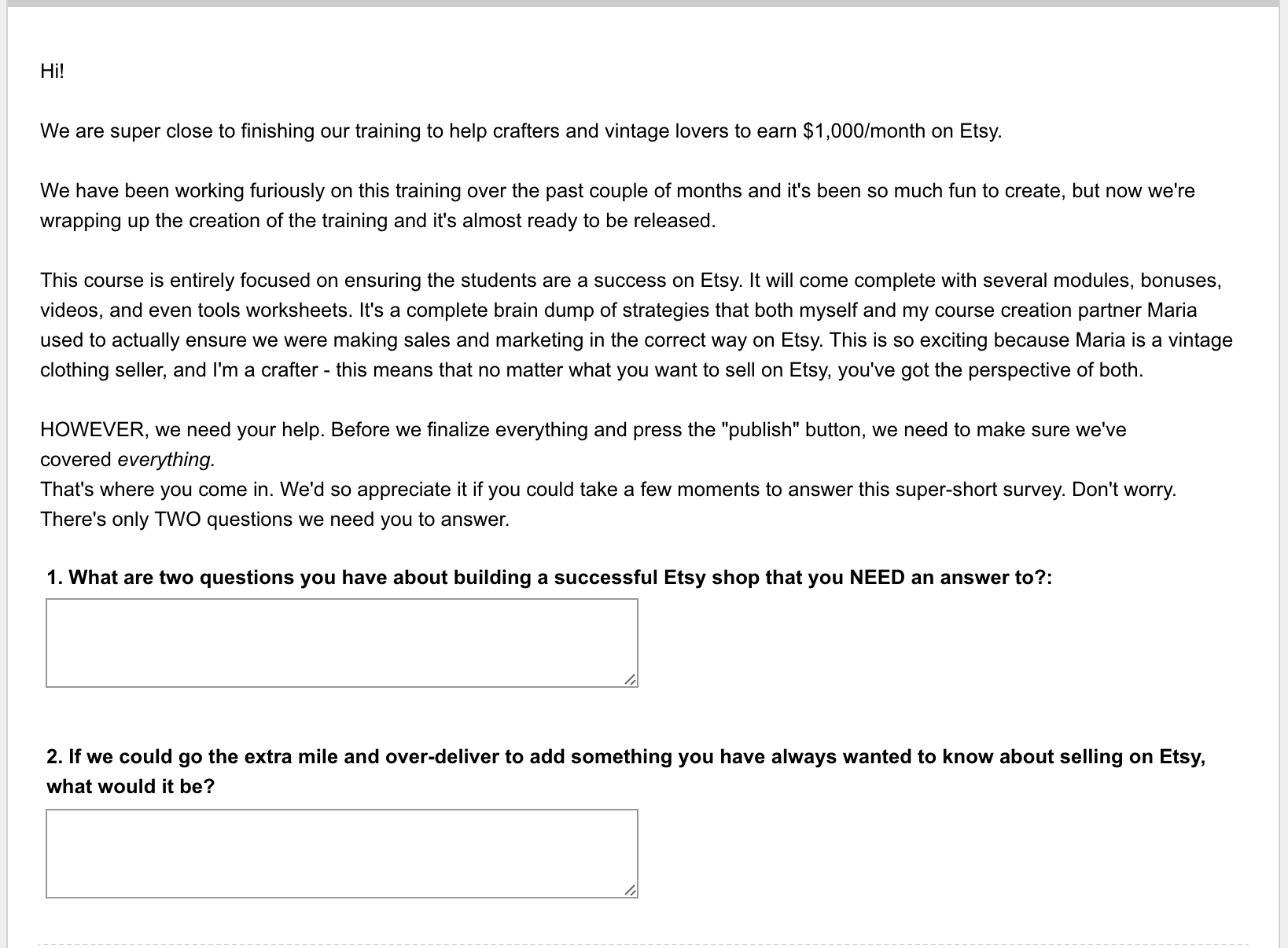
I got almost 60 survey responses:
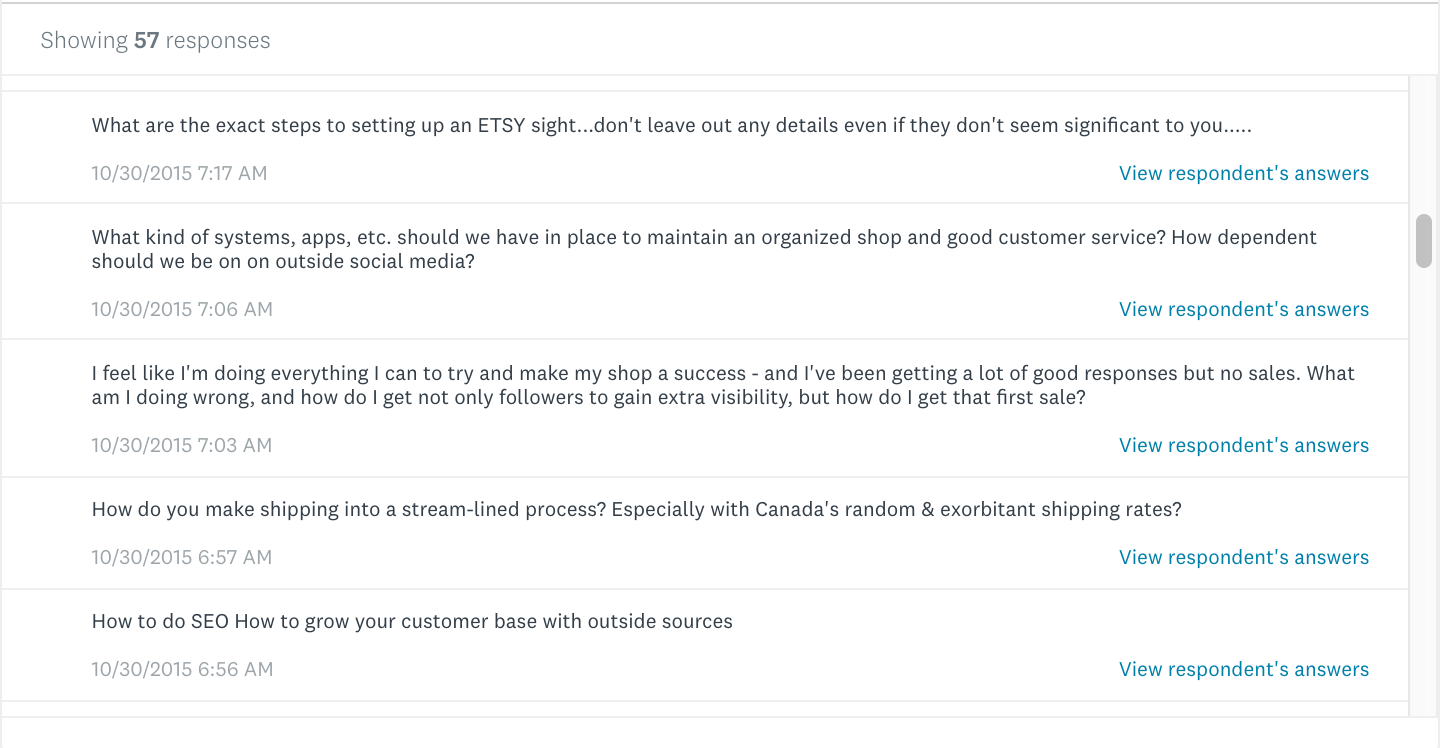
And I used that information to create course content that would be both useful to my customers and easily applied.
For example, I had no idea how much shipping was holding my customers back from starting their shops. To them, it seemed like an overwhelming hurdle. So I made sure the course had a shipping module.
Because I understood the psychographics of my target customer, my sneak peek webinar sold over 20% of attendees. The information I gathered helped me build out bonuses, create my sales copy, collect social proof, and build a launch list of highly qualified people.
Here is a copy of the survey I used so you can use it for your next product launch.
In ecommerce? You can use psychographics to develop products, too.
Frank Body knows their customers enjoy coffee culture, so they’ve used that knowledge to develop their product line to be irresistible:
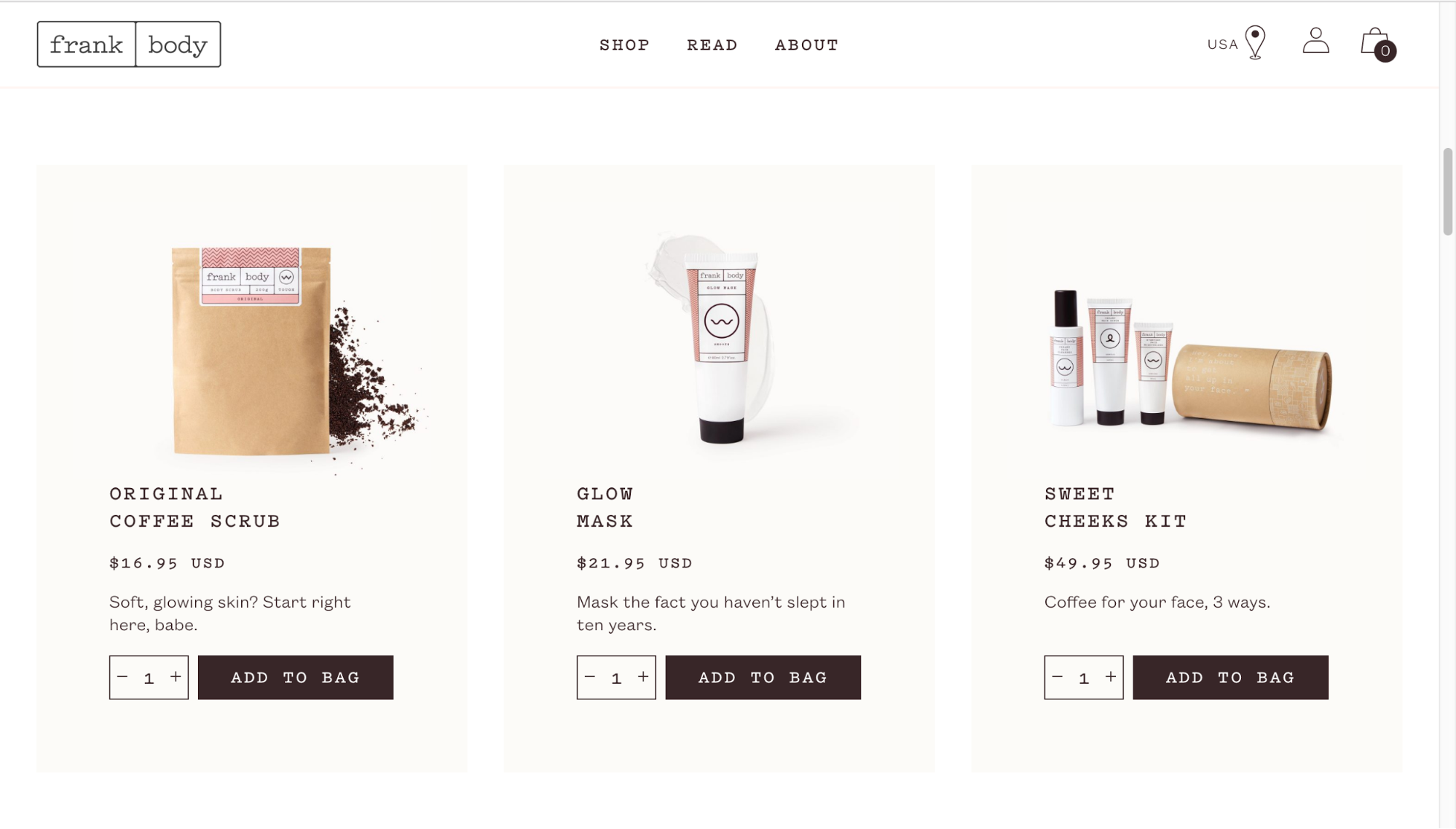
Psychographic marketing starts with your product.
Use Them on Your About Page
Why do visitors go to your About page?
This isn’t one of those questions that has no wrong answer. They go to your About page to find out whether your business jives with them, making it the perfect place to include psychographics on your website.
Check out how Android Homme appeals to their target customers in their about page:
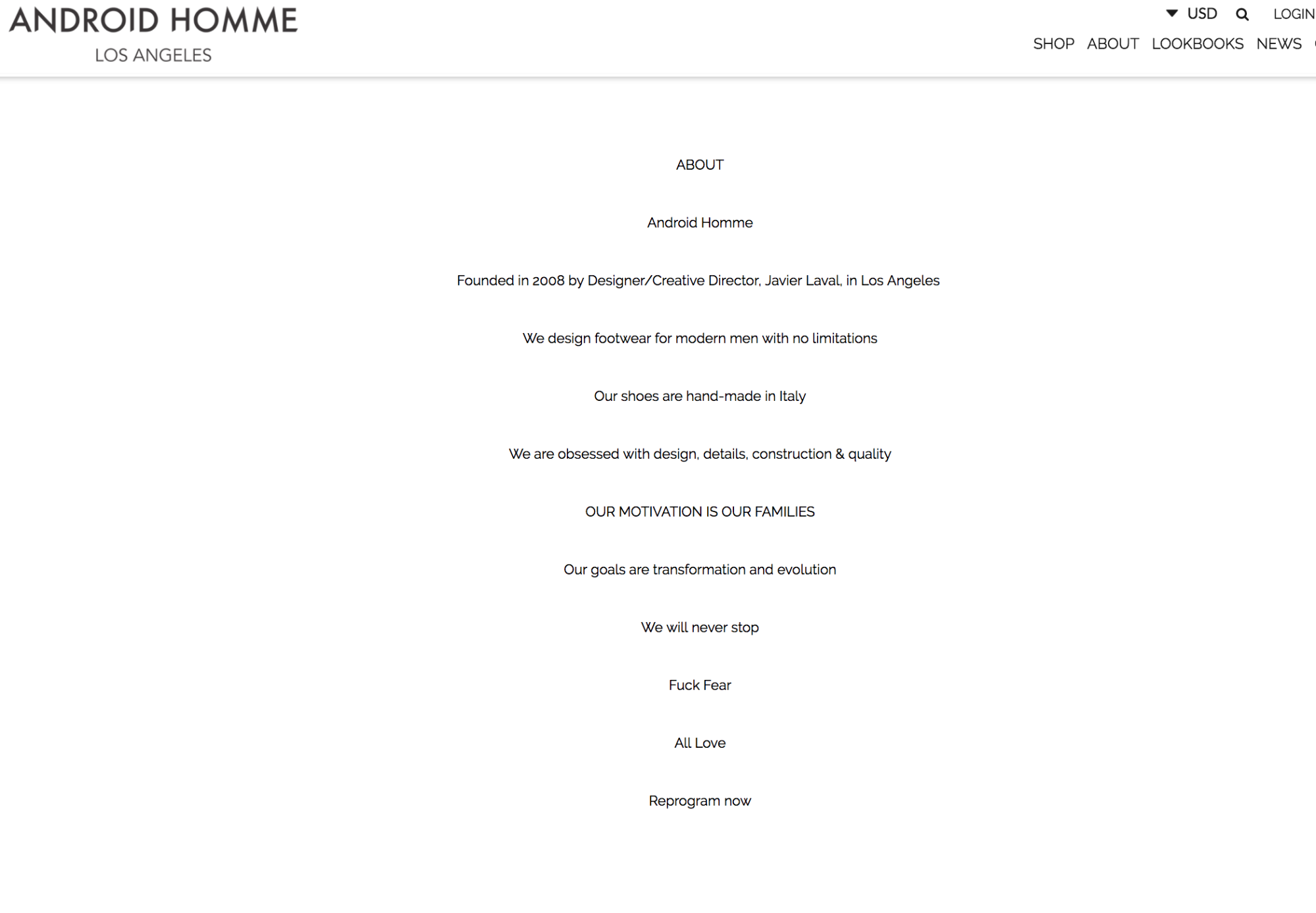
They’re brief, use curse words, and even mention the founder’s motivation (which they wouldn’t have done if it wasn’t in line with their target customer’s motivation).
Another example is Frank Body’s About page. They resonate through psychographics by cracking jokes, using sarcasm and playing into the culture they know their target customers follow:
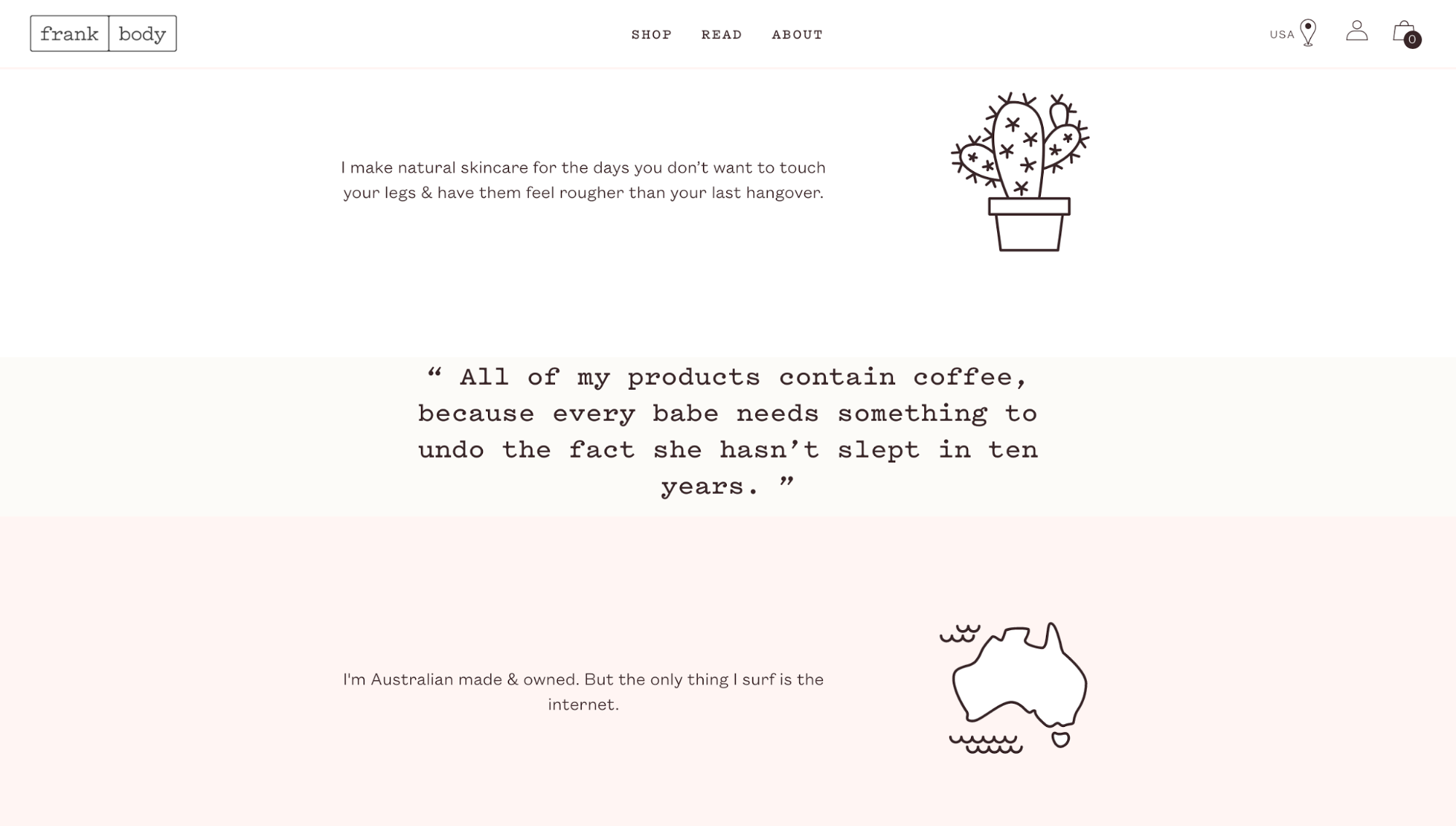
Use your About page to make it clear to your target customers that they’re in the right place.
Use Them in Your Ads
I’ve shown you how psychographics sell.
So it makes sense that one of the best uses of your customers psychographics are in your paid marketing efforts, like your ads.
Check out how Rev uses culture psychographics in their ads to appeal to their target customer:
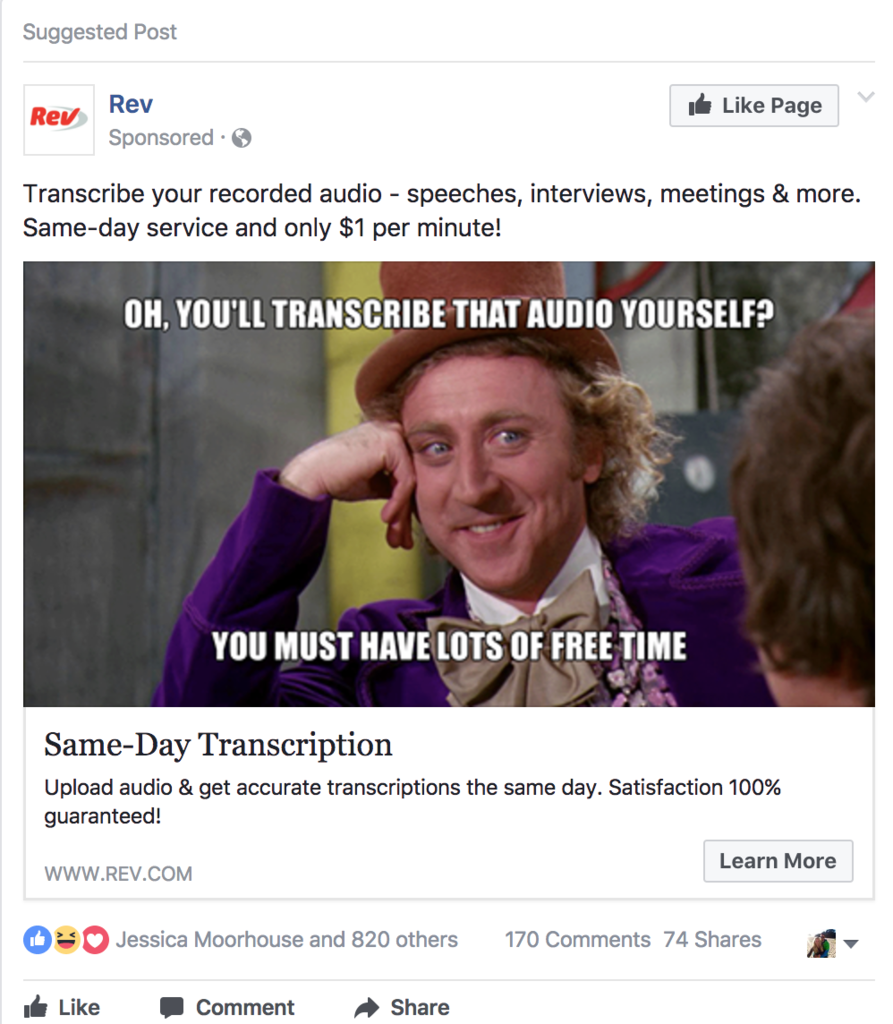
Using popular internet memes wouldn’t strike a chord with everybody, but it does clearly strike a chord with their target customers, considering how popular the ad is.
Your ads should immediately appeal to your target customers. It’s okay if they only appeal to your target customers.
In fact, they should really only get in front of your specific target customers…
Use Them In Your Targeting
So you can use psychographics to create ads that will capture your audience's attention.
Check.
But you can also use psychographics in how you target your ads.
Think about it like this: if you were unaware of your customer’s psychographics, you’d have to target your ads to their demographics.
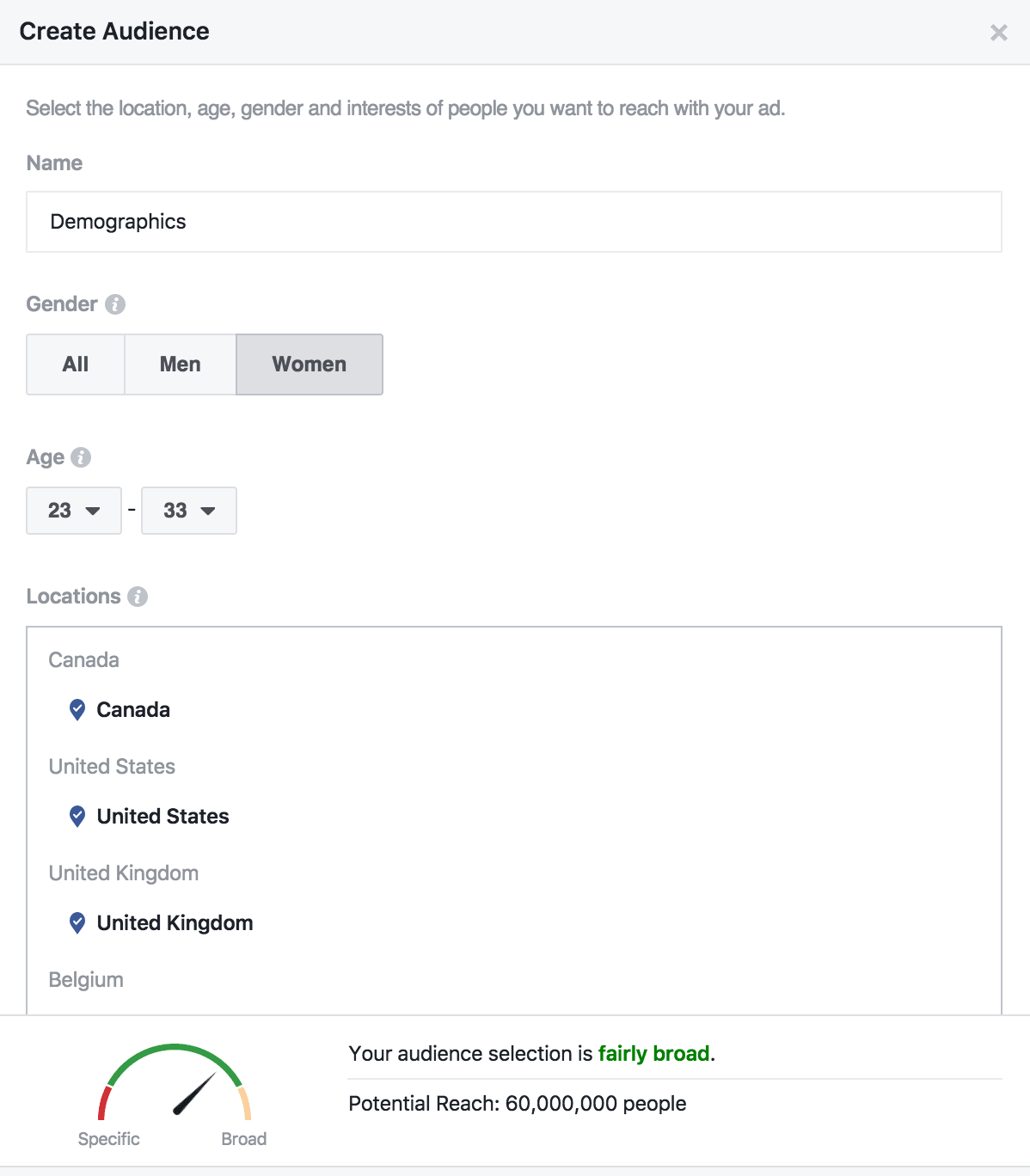
See how this ad’s potential reach is 60,000,000 people? Yeah, that’s not a good thing.
You might reach some target customers who are interested in your product.
But most of those people aren’t. And that’s just expensive.
You can save money and increase your conversion rate by targeting based on their psychographics; specifically what media they consume.
We target our ads based on that psychographic which has allowed us to get tight on our audience, increasing the impact of our ad spend.

You’re probably all like “Okay Sarah, but I can’t use psychographics if I don’t even know what the psychographics of my target customers are!”
Valid.
But I’m one step ahead of you…
Chapter 3: How to Find Your Target Customer’s Psychographics (For Free)
Okay, so you need psychographic information on your target customers.
Got it.
“But I don’t have the budget for a focus group to find out what my target customers are thinking!”
Good news: you don’t need one. You can find psychographics for free just by looking in the right spots.
Find Them Through A/B Testing
What if there was a way of finding the psychographics of the customers who are already buying from you? Then you could reach more of the people who are already qualified.
Good news. There is.
It’s called A/B testing.
A/B testing allows you to pit two variations of a page or opt-in against each other to find out the clear winner.
On our opt-in for Why You NEED to Grow an Email List, we tested two ways to describe the same offer:
- List building
- Email marketing
The content upgrade didn’t change. Just how we described it.
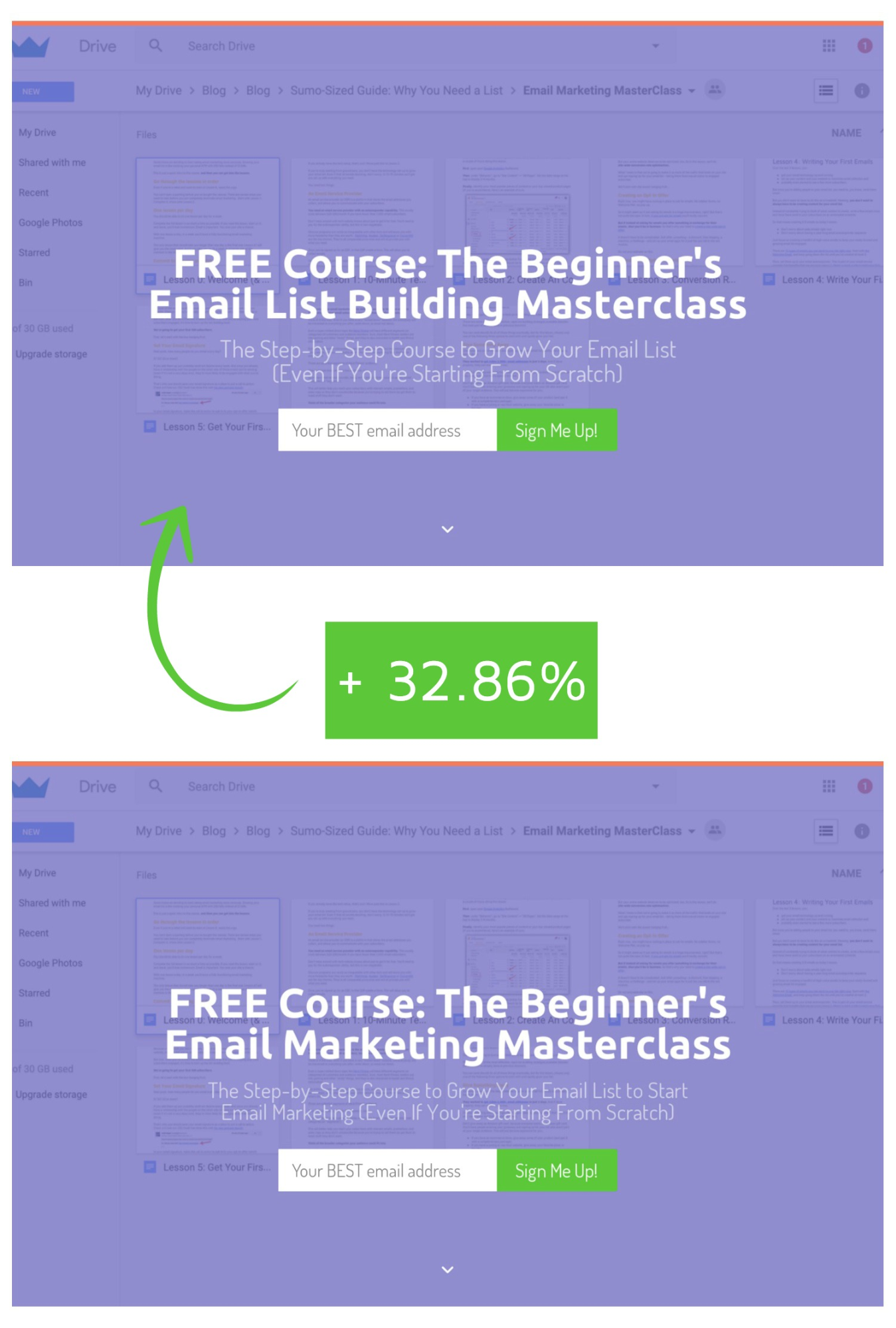

When we described the offer as a “list building masterclass”, it outperformed “email marketing masterclass” by nearly 33%.
Email marketing = more advanced. List building = more beginner.
This taught us about the psychographics of our blog audience. Their goals are to build their lists. They’re not at the stage where email marketing will be useful.
Test copy related to:
- Lifestyles (Productivity: “Save 90 Minutes/Day So You Can Spend More Time With Your Kids” vs. “Save 90 Minutes/Day So You Can Get Outdoors More”)
- Goals (Weight loss: “Lose 10 Pounds in 60 Days” vs. “60 Days to Michelle Obama Arms”)
- Desires (Branding: “Get 6 Tools That’ll Make You Look Like a $1Million Brand” vs. “Get 6 Tools to Make Your Brand Appeal to Exactly The Right People”)
- Fears (Skin care: “Avoid Breaking Out on Your Wedding Day” vs “Stop Looking Older Than You Are”)
To get a sense of the psychographics of your current buyers.
Discover Psychographics Through Social Listening
How much time do you spend on Facebook every day?
At least 20 minutes, cumulatively. If Facebook isn’t your jam, replace that with Instagram, Reddit, Twitter, Pinterest, or whatever your social molotov cocktail is.
Your target customer probably spends even more time than you:

Source: socialmediatoday.com
Here are a few places you can dig:
Facebook Groups
Look up Facebook groups in your niche…
And start eavesdropping (and hopefully contributing) to the conversations that are going on there.
Take this example from a beginner photography group:
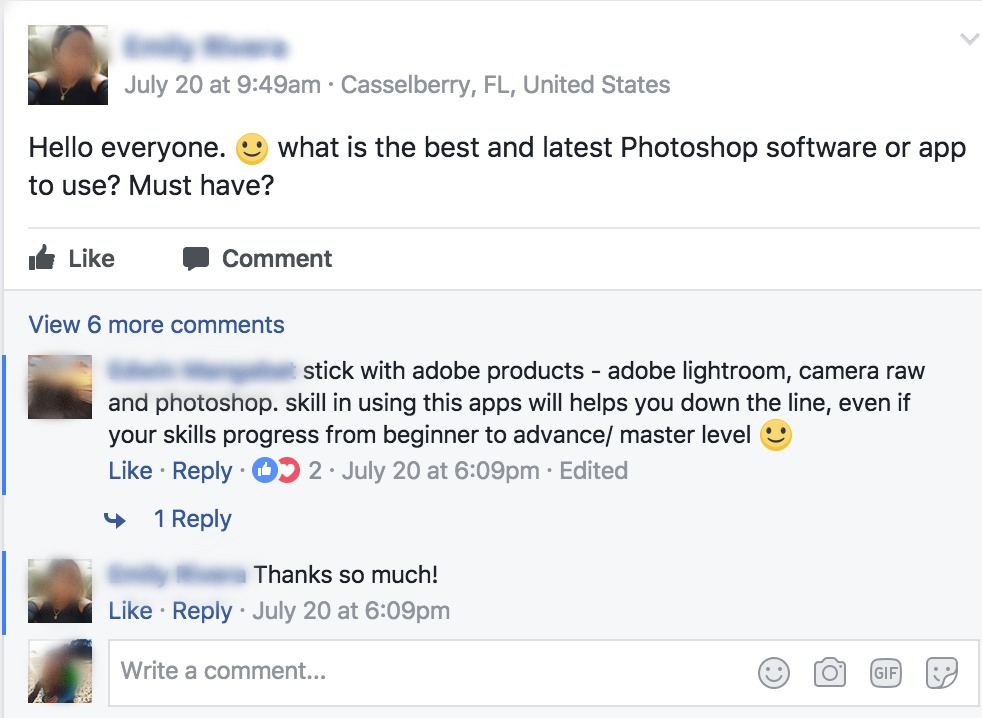
If your target customers were people who were interested in beginner photography, you’d find out from this post that they:
- Want to be current on software and app trends
- Develop brand loyalty
- Value ability to progress with and use a program long term.
Copy & paste any psychographic data points you find into a spreadsheet so you can find trends.
Besides Facebook groups, Reddit is the best place on the internet to find information about the psychographics of your market.
Reddit has sub-communities, called Subreddits, where people have conversations around a specific topic.
Let’s say you had a beauty supplies ecommerce store. You can find a group of 35,000 people talking about beauty in the /r/beauty subreddit.
Filter the threads by the “top” tab:

You’d find that:
- Your target customers don’t have a lot of time (maybe they leave things like teeth whitening to the last moment before an important date) — they need quick results
- They want to look younger/fresher.
Open the individual posts to get even more information:
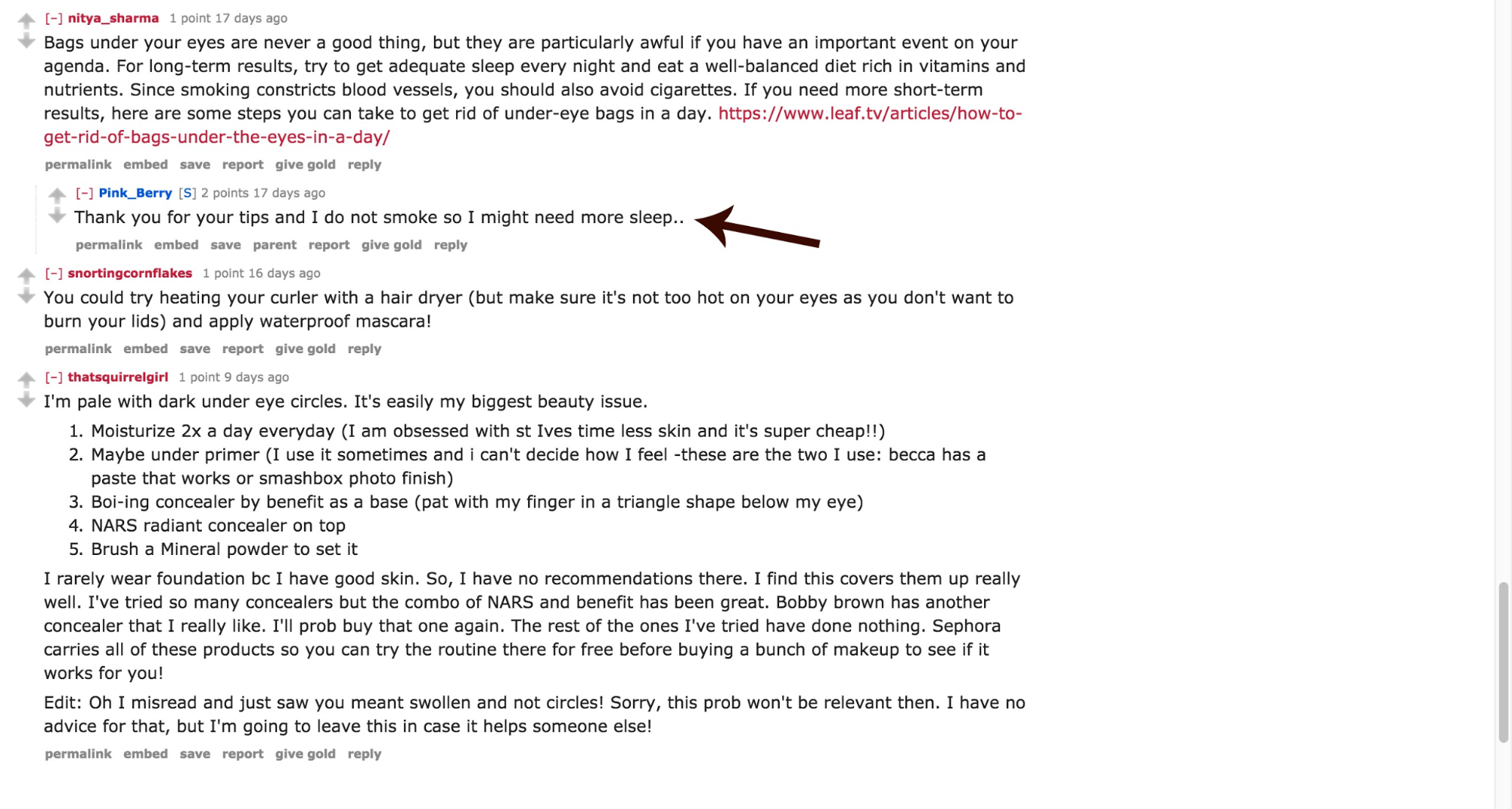
In this case, you’d find out that they don’t smoke but may struggle to get enough sleep.
From there, you can find what their goals are specifically related to your product.
Find Them On Product Reviews
Other than the place where your paycheck goes, Amazon is a huge collective of the deepest, darkest corners of your customer’s thoughts.
Enter the 3-star Amazon review.
Open a popular product in your industry. Let’s say you were in the personal finance niche.
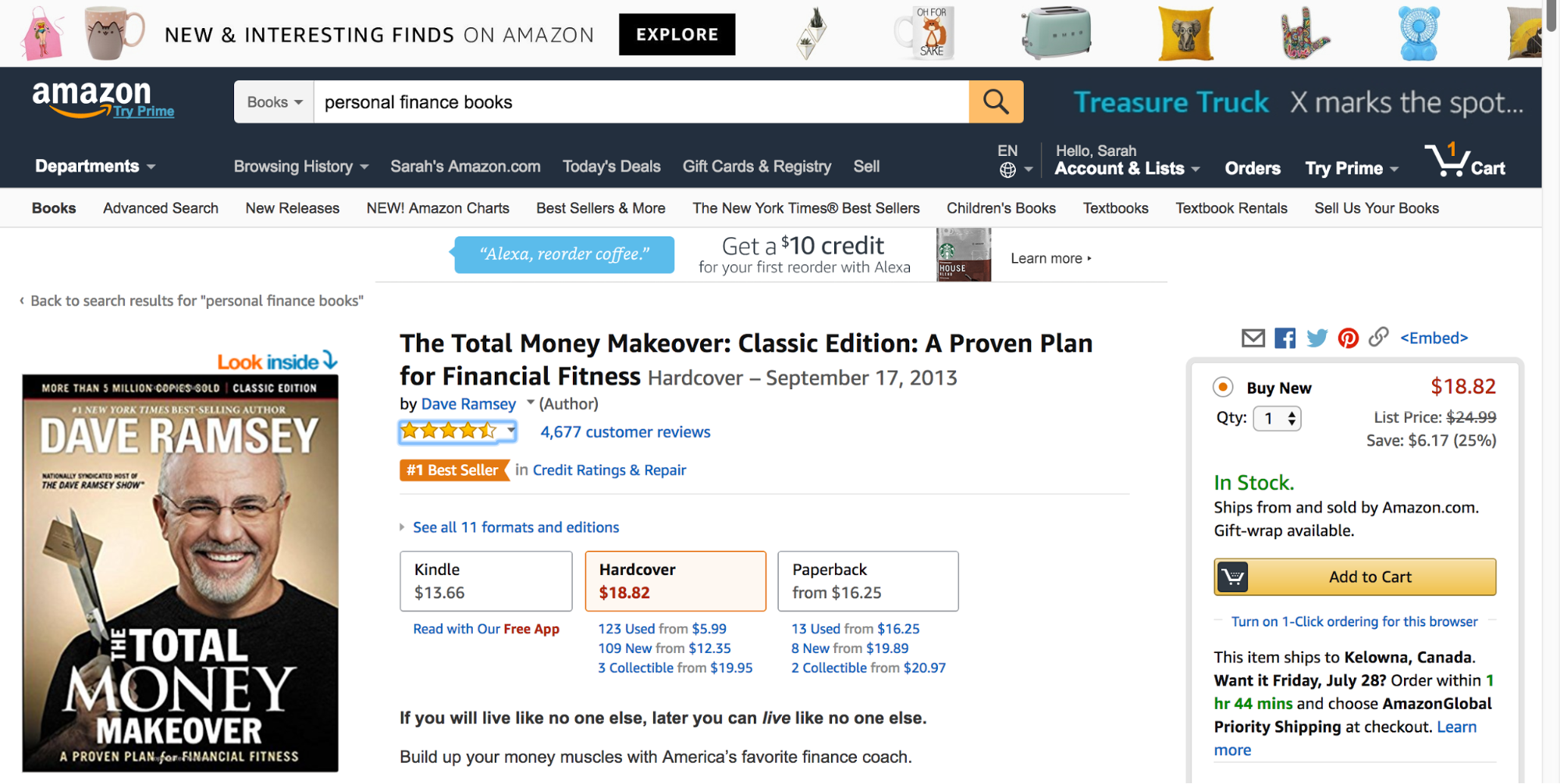
Filter it for 3 star reviews.
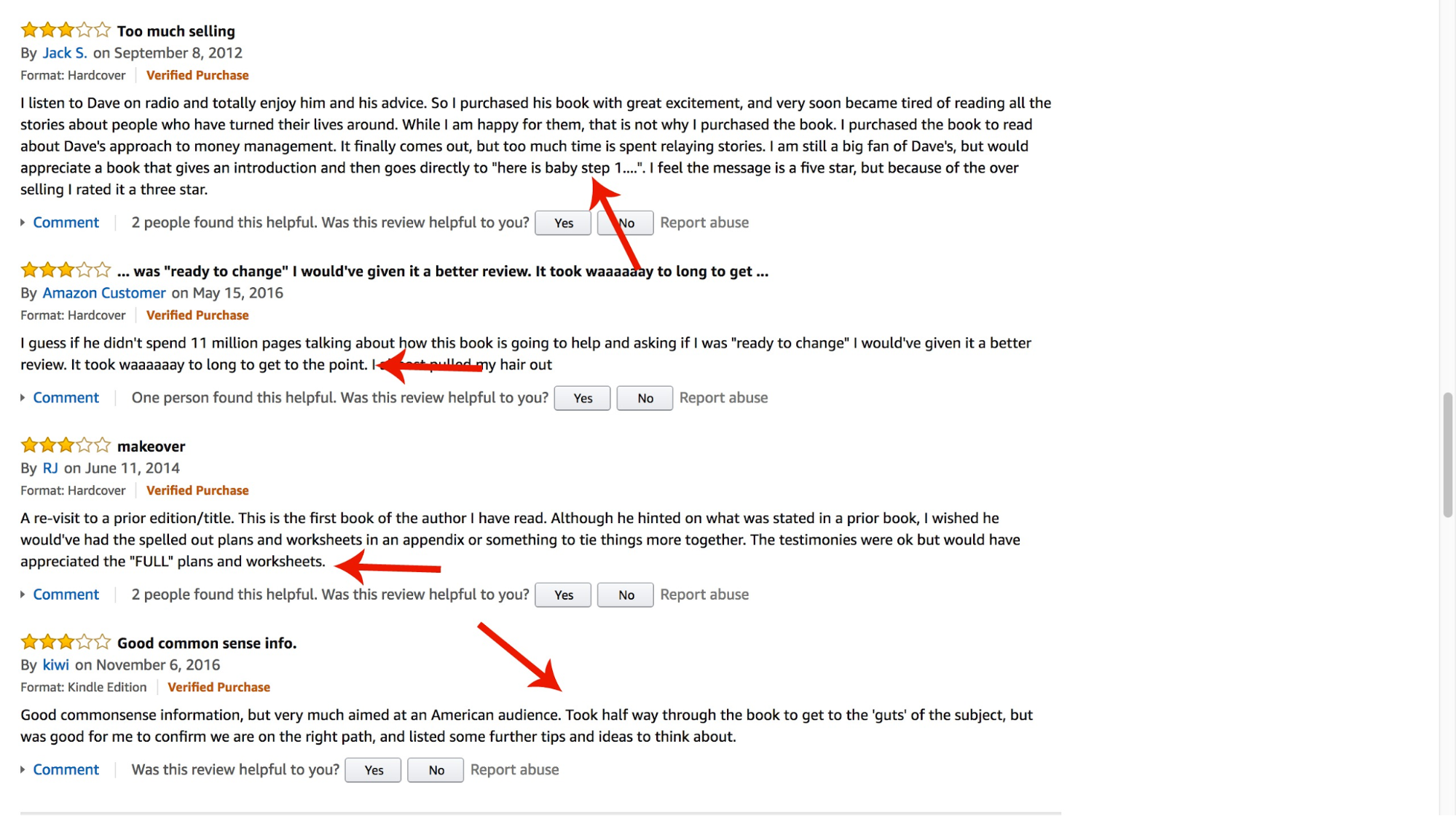
4 and 5 stars are too positive and you won’t find anything critical about them, and the 1-2 star reviews are too negative to be useful.
Paste any reviews that contain any inkling of a psychographic into your spreadsheet.
Have Conversations with Your Audience
Ask questions of your customers or email subscribers.
Add a question to your autoresponder asking about your subscribers goals, fears, or what’s holding them back, like Pat Flynn does of his email subscribers:

Make sure your email is easily found on your “About” page.
Noah Kagan’s ideas for his YouTube channel come from him asking “what’s one thing you need help with?”, looking for the most common questions, and answering them.
You can also get on the phone with your target customers. This will be the #1 most useful thing you ever do for your business if you have the chance.
Be accessible. Ask questions.
Find Them From Your Competitors
Steal more than just customers from your competition. Steal psychographics.
Analyze Competitors Top Content
Find the top content on your competitor’s site. For example, if one of your competitors was Nerd Fitness: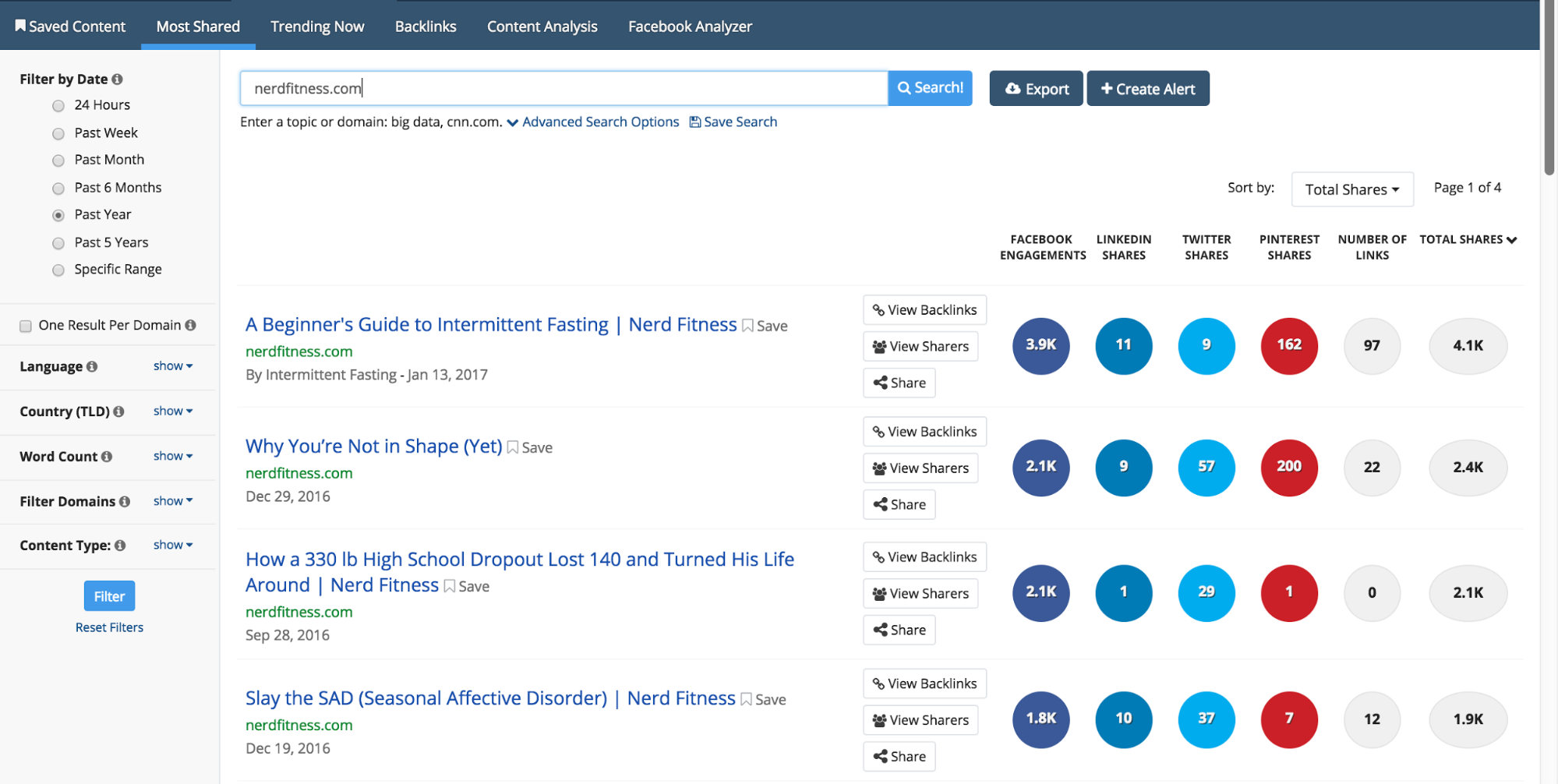
Just by looking at the topics you can get a sense of the psychographics of this audience. They:
- Are inspired by success stories
- Are struggling with Seasonal Affective Disorder
- Want to lose weight and get in shape.
You know this because this is the most shared (read: most popular) content in your niche.
If you have a fitness gear ecommerce store, this can help you create copy or even design your website so more people will buy.
Dig Through Blog Comments
While you’ve got the competitor’s top content up, open the top few results and go to the comments section:

This is yet another place your customers are having conversations related to your niche.
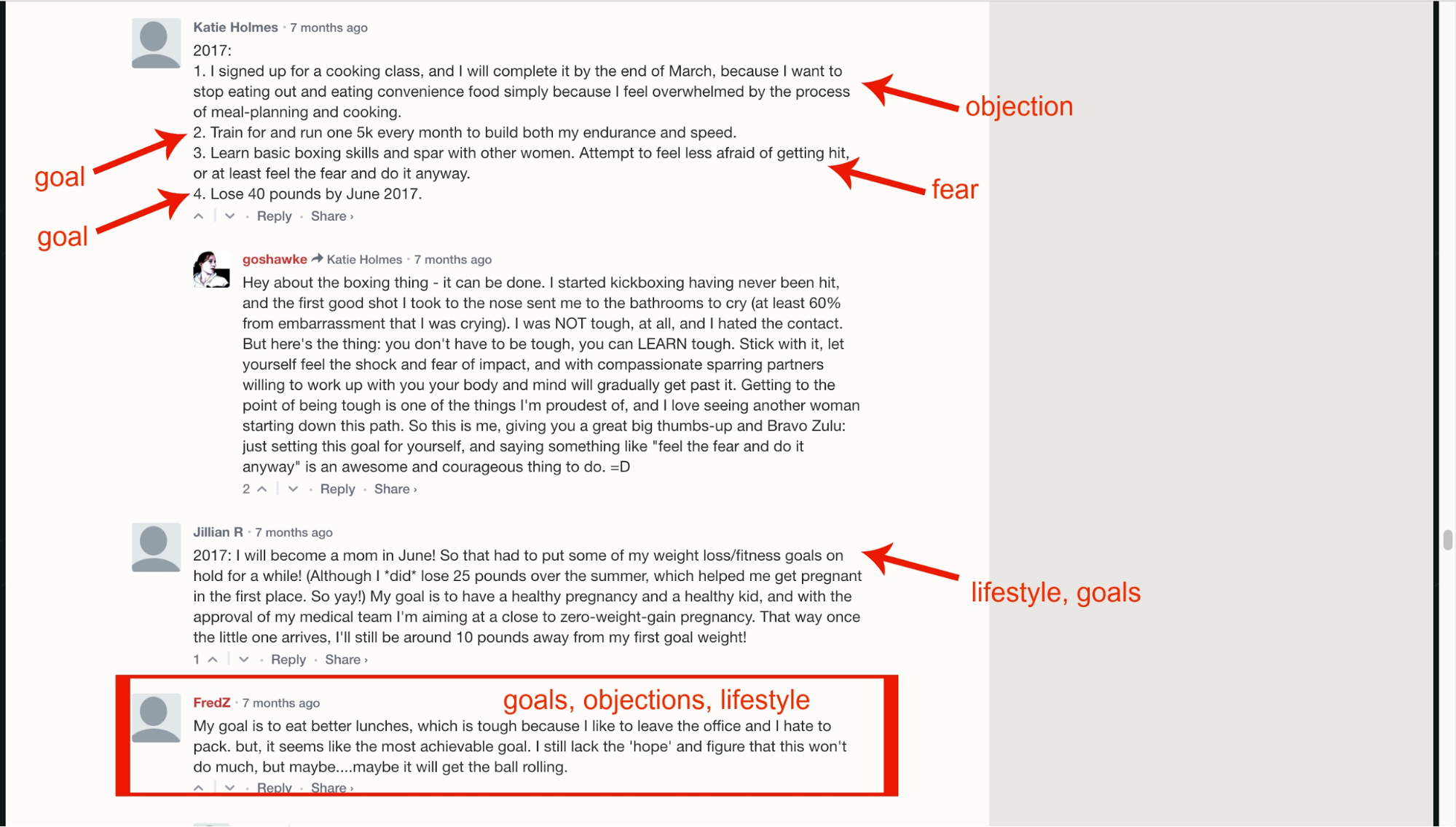
- Objection: Overwhelmed by cooking and meal planning
- Fear: Getting hit while boxing
- Goal: Run 5k/month
- Goal: Lose 40 pounds by June
- Lifestyle: Being a parent
Protip: Technical how-to content usually won’t have such transparent comments.
Find Them By Surveying Your Customers
As you grow your audience surveying them is a great way to find psychographics.
Craft a survey asking no more than 5-6 questions related to their psychographics only.
For example, our CEO Noah Kagan surveyed his audience before he launched his podcast:
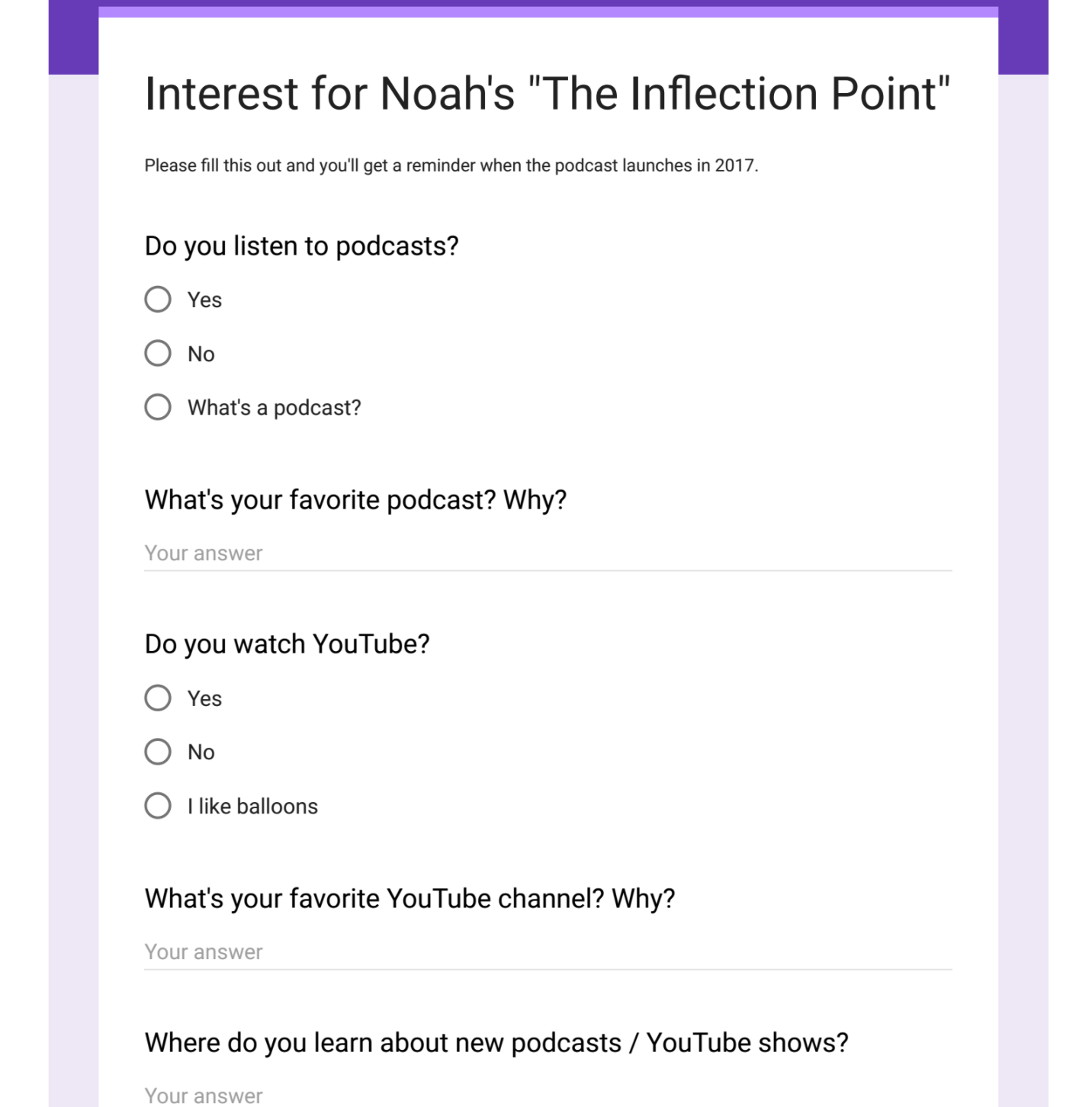
Asking questions related to the psychographics of his target audience (such as what media they consume).
The survey helped with the podcast launch (to the tune of growing it from 0-10k downloads/episode).
You’re Losing Sales Without Psychographics
Every successful company on this planet targets psychographics.
If you want to be one of them, you need to do psychographic marketing, too.
Don’t know where to start? Choose your own adventure:
→ Have an email list of 100 or more? Start with sending them a survey (click here to get a pre-made survey to make it easier).
→ Have no email list? Start by social listening (which you should have been doing all along).
After you’ve collected psychographics from your target customers, use them. Update your sales pages, your product listings, and your “About” page.
Refine your ads and targeting, and tweak your product offerings.
Then, profit.
Add A Comment
VIEW THE COMMENTS